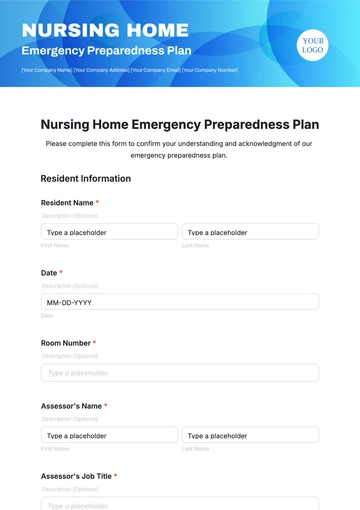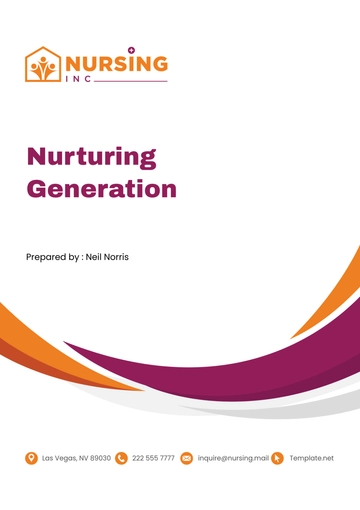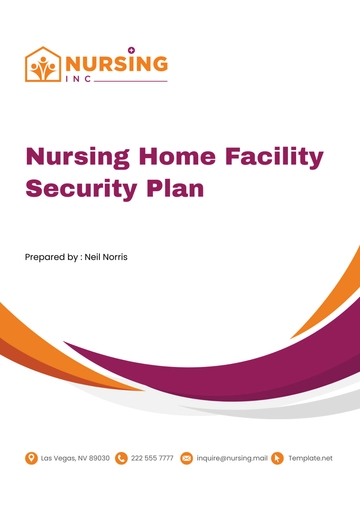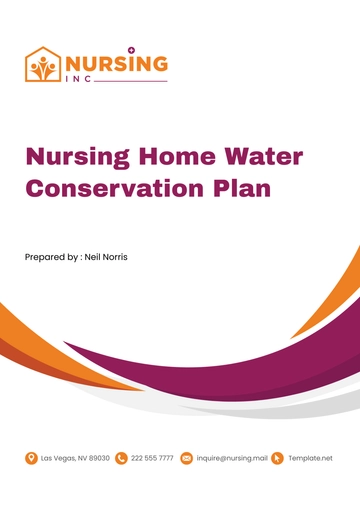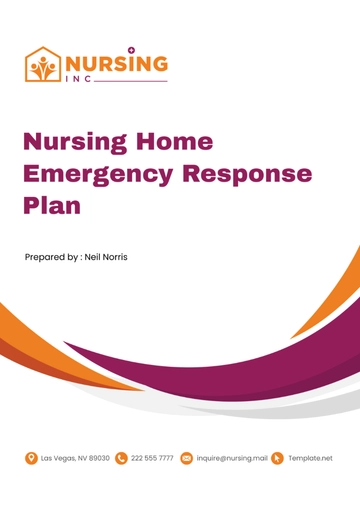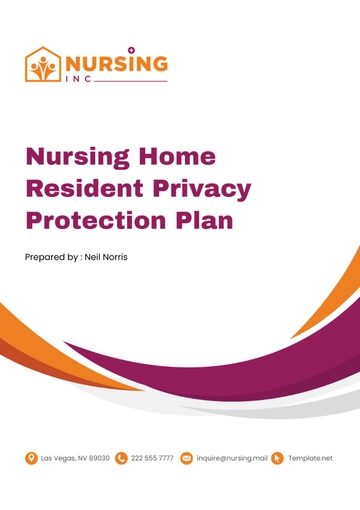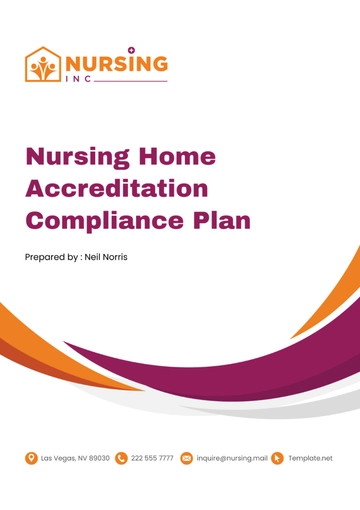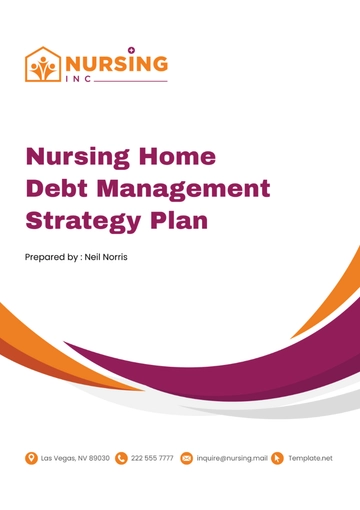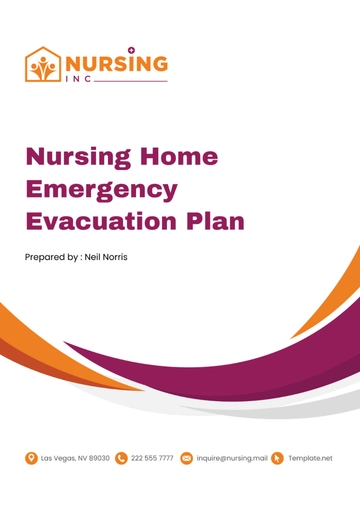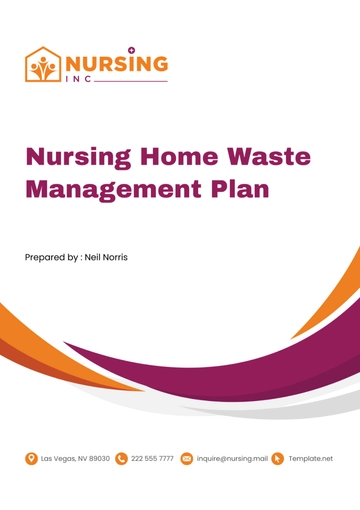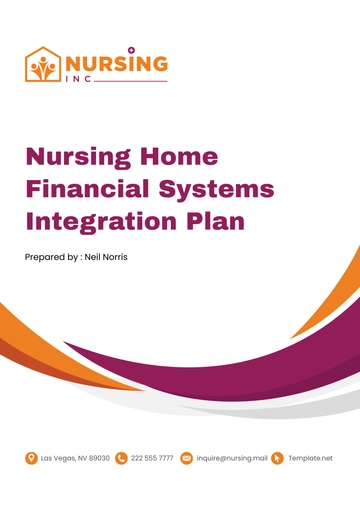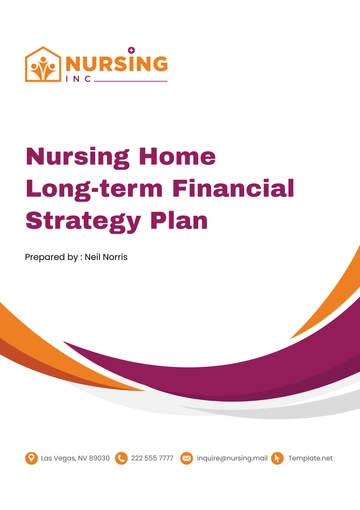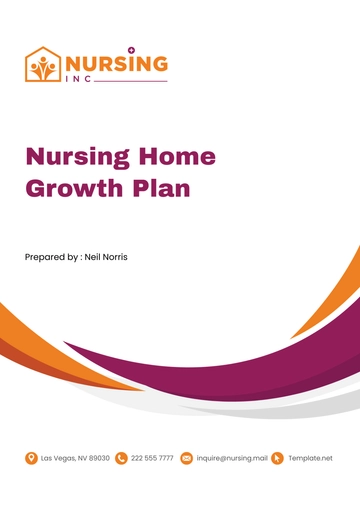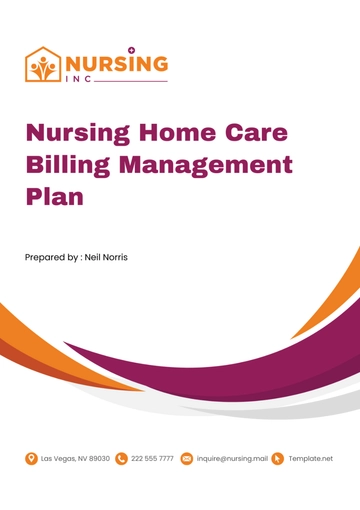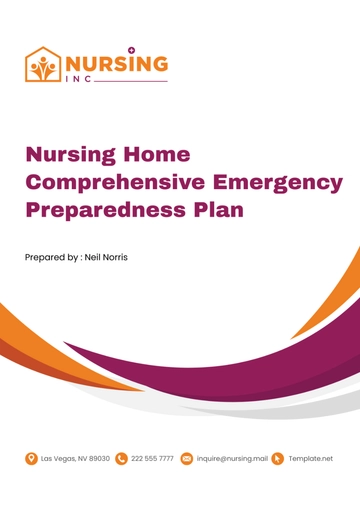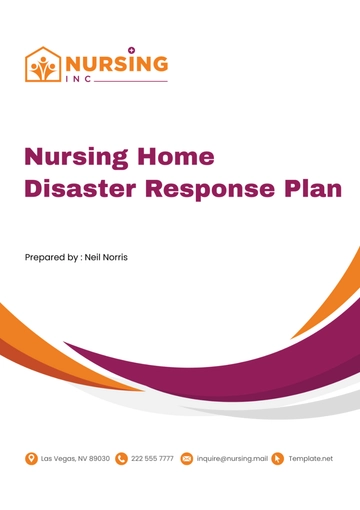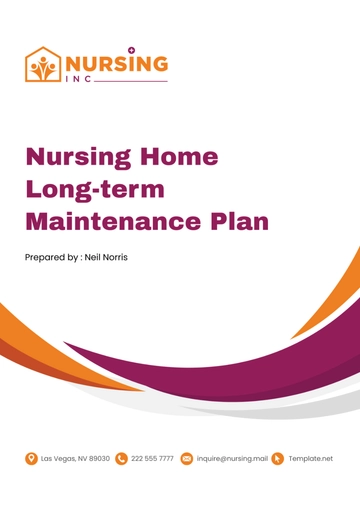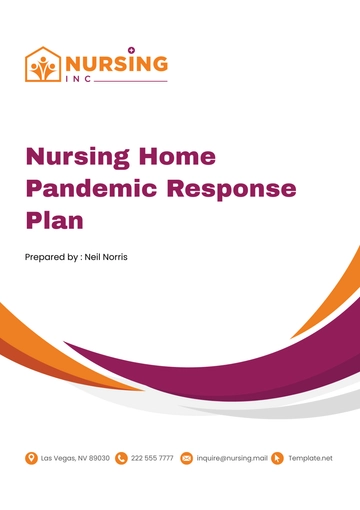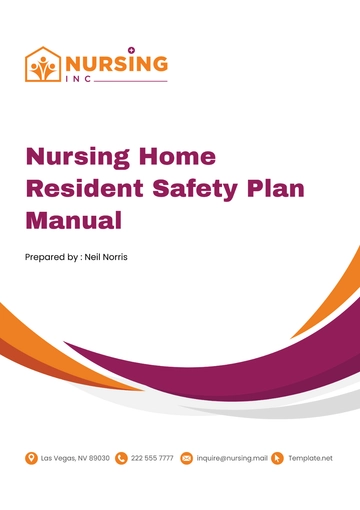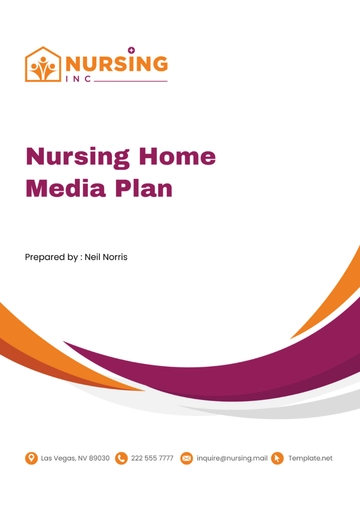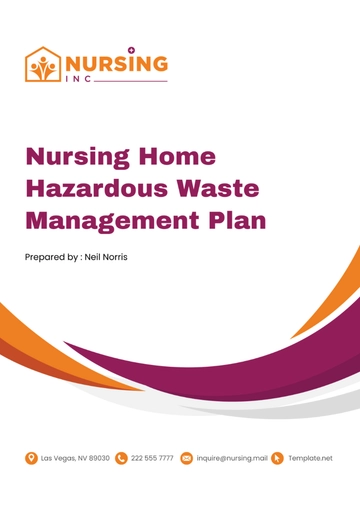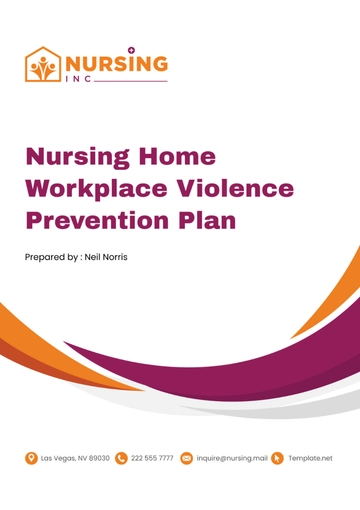Free Nursing Home Care Billing Management Plan
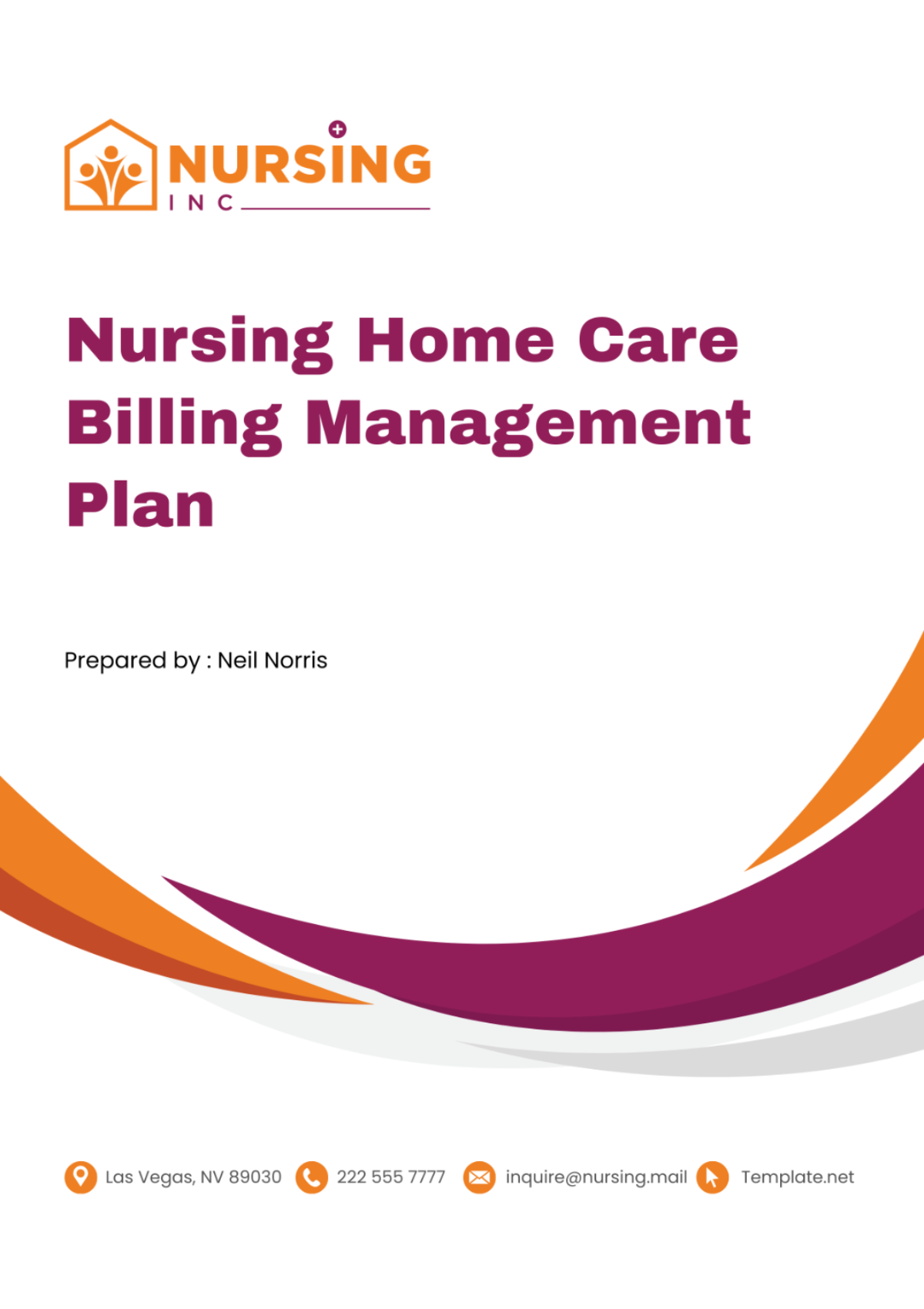
I. Executive Summary
At [Your Company Name], we recognize the pivotal role that efficient billing management plays in the operational and financial stability of nursing homes. Our Nursing Home Care Billing Management Plan is designed with the dual purpose of refining current billing processes and leveraging technological advancements to set new industry benchmarks. Our strategy encompasses a holistic approach to address existing bottlenecks, enhance accuracy, and ensure adherence to the latest compliance standards, ultimately aiming to elevate the standard of care through improved financial management.
To quantify our goals, we aim to achieve a 20% reduction in billing errors and a 30% improvement in billing cycle times within the first year of implementation. By setting these specific targets, we provide a clear direction for our initiatives and a benchmark against which we can measure our success, ensuring that our efforts translate into tangible benefits for our facilities and the families we serve.
II. Assessment of Current Billing Processes
A comprehensive evaluation of [Your Company Name]'s current billing operations has laid the foundation for our improvement plan. This assessment highlighted several critical areas for enhancement:
Area | Current Status | Potential Improvement |
|---|---|---|
Procedures | Manual data entry | Automation/Software adoption |
Roles | Lack of specific roles | Role Specification |
Decision Making | Unstructured process | Procedure Standardization |
Technology | Outdated systems | Advanced billing software |
Compliance | Non-compliant with latest regulations | Update procedures and training |
Procedures: The prevalent reliance on manual data entry not only slows down the billing process but also introduces a higher risk of errors. Transitioning to automated systems and adopting billing software will streamline operations, improve accuracy, and significantly reduce processing times.
Roles: The absence of clearly defined roles within the billing process has led to inefficiencies and accountability issues. By specifying roles and responsibilities, we can ensure a more cohesive operation, where every team member understands their contributions towards achieving billing accuracy and efficiency.
Decision Making: The current unstructured approach to decision-making in billing processes has resulted in inconsistencies and delays. Standardizing procedures and establishing clear guidelines will facilitate quicker decision-making, aligned with best practices and compliance requirements.
Technology: Our reliance on outdated billing systems has put us at a disadvantage, particularly in terms of efficiency and the ability to comply with the latest regulations. Implementing advanced billing software, tailored to the unique needs of nursing homes, will propel us towards achieving our goals of accuracy, compliance, and operational excellence.
Compliance: Non-compliance with the latest regulations not only risks significant penalties but also undermines our commitment to operational integrity. Updating our procedures and investing in comprehensive training for our staff will ensure continuous adherence to industry standards and laws.
III. Goals and Objectives
Our overarching objective is to revamp [Your Company Name]'s billing system to enhance operational efficiency, ensure regulatory compliance, and improve financial transparency. To realize this vision, we have set forth the following strategic goals:
Efficiency: Reduce the billing cycle time by 30%, enabling quicker turnaround times from service delivery to revenue realization. This efficiency gain will not only improve our cash flow but also allow us to allocate resources more effectively, enhancing the quality of care we provide.
Accuracy: Achieve a 20% reduction in billing errors within the first year of implementing the new billing management plan. Accurate billing is crucial for maintaining trust with our clients and avoiding costly disputes and corrections.
Compliance: Ensure 100% compliance with all relevant industry standards and regulations through continuous training and updates to our billing processes. This commitment to compliance will protect us from legal risks and reinforce our reputation as a trustworthy and reliable care provider.
Ease of Use: Implement user-friendly billing software that simplifies the billing process for our staff, reducing the time and effort required to manage billing tasks. By choosing systems that are intuitive and easy to navigate, we can minimize the learning curve and enhance productivity.
Transparency: Foster transparency in billing practices to build trust with the families we serve. By providing clear, detailed invoices and readily addressing any billing inquiries, we affirm our commitment to honesty and accountability in our financial dealings.
By pursuing these goals with dedication and strategic focus, [Your Company Name] is poised to achieve a significant transformation in our billing operations, setting a new standard for financial management in the nursing home sector.
IV. Strategies
The strategic foundation of the Nursing Home Care Billing Management Plan at [Your Company Name] is built upon four pillars: technological advancement, staff development, procedural standardization, and continuous improvement. Each strategy is designed not just to enhance our billing systems but to foster an environment of efficiency, accuracy, and compliance.
Adopting New Technology: Select and implement state-of-the-art billing software that aligns with our needs. This technology will automate many of the tasks currently performed manually, reducing errors and saving time.
Training Staff: Develop a comprehensive training program that equips our staff with the necessary skills and knowledge to effectively use the new billing system and follow updated procedures.
Implementing Standardized Procedures: Create a set of standardized billing procedures that are clearly documented and accessible. These procedures will ensure consistency in our billing practices across the entire organization.
Monitoring Progress and Effectiveness Regularly: Establish a system for regularly monitoring key performance indicators (KPIs) related to billing. This will help us measure the effectiveness of our strategies and make adjustments as needed.
V. Implementation Plan
The implementation plan for the Nursing Home Care Billing Management System is structured to ensure a smooth transition to the new system and procedures. Here is an action plan that outlines the key steps, timelines, and responsibilities:
Phase | Tasks | Timeline | Responsible Party |
|---|---|---|---|
Software Selection | Evaluate options Select the best fit | Month 1-2 | IT Department |
Setup | Install software Configure settings | Month 3 | IT Department |
Staff Training | Develop training materials Conduct training sessions | Month 4 | Training Department |
Testing | Perform system tests Address issues | Month 5 | IT & Billing Departments |
Launching | Go-live Monitor initial performance | Month 6 | All Departments |
VI. Training Program
To ensure our staff is fully prepared to utilize the new billing system and adhere to updated procedures, the following training program will be implemented:
Lecture Sessions: Cover the theoretical aspects of the new billing software and standardized procedures. These sessions will provide an overview of the system's features and the rationale behind the new procedures.
Hands-on Sessions: Provide practical, hands-on experience with the new system. Staff will practice entering data, generating bills, and troubleshooting common issues under the guidance of experienced trainers.
Evaluations: Assess the effectiveness of the training through both written tests and practical demonstrations. This will help identify areas where additional training may be needed.
Training Schedule:
Week | Session Type | Topics Covered |
|---|---|---|
1 | Lecture | Overview of New System and Procedures |
2 | Hands-On | Data Entry and Bill Generation |
3 | Lecture | Compliance and Error Prevention |
4 | Hands-On | Troubleshooting and Advanced Features |
5 | Evaluation | Written Test and Practical Demonstration |
VII. Evaluation and Monitoring
The effectiveness of the Nursing Home Care Billing Management Plan will be continuously evaluated against a set of predefined KPIs. This approach allows for regular assessment and timely adjustments to maintain and enhance the system's performance.
Key Performance Indicators (KPIs):
Billing Cycle Time: The average time from service delivery to bill issuance. Our goal is to reduce this time by 30% within the first year.
Billing Accuracy: Measured by the percentage of bills issued without errors. We aim for a 20% reduction in billing errors in the first year.
Staff Performance: Assessed through a combination of training evaluations, system usability feedback, and error rate tracking.
Patient Satisfaction: Evaluated through surveys focusing on transparency and understanding of billing statements.
Monitoring Schedule:
Regular audits and performance reviews will be conducted according to the following schedule:
Monthly: Initial performance review focusing on quick wins and immediate adjustments.
Quarterly: Comprehensive assessment against KPIs with a focus on identifying trends, challenges, and opportunities for improvement.
Annually: In-depth evaluation of the plan's overall effectiveness, including staff performance and patient satisfaction, leading to adjustments for the next cycle.
This structured approach to evaluation and monitoring will ensure that [Your Company Name] not only achieves its goals in enhancing the billing process but also maintains a continuous improvement cycle to adapt to future challenges and opportunities.
VIII. Compliance
Ensuring compliance within the billing process is paramount for [Your Company Name], as it directly impacts our operational integrity and legal standing. Our compliance strategy encompasses a comprehensive approach to understanding, adhering to, and staying updated with all relevant laws and regulations.
Compliance Plan:
Regular Legal Reviews: Engage legal experts to conduct semi-annual reviews of all billing-related laws and regulations at both the federal and state levels. This ensures that our practices are always in alignment with current legal requirements.
Compliance Training: Implement mandatory annual compliance training for all billing department staff. This training will cover legal requirements, ethical billing practices, and the importance of compliance in every aspect of our operations.
Compliance Audits: Conduct quarterly internal audits to assess adherence to legal standards and internal policies. These audits will help identify any compliance gaps and areas for improvement.
Compliance Schedule and Responsibilities:
Activity | Frequency | Responsible Party |
|---|---|---|
Legal Reviews | Semi-Annually | Legal Department |
Compliance Training | Annually | Training Department |
Compliance Audits | Quarterly | Internal Audit Team |
IX. Risk Management
In the dynamic environment of nursing home care, proactively managing potential risks is crucial to maintaining the integrity of our billing processes. Our risk management strategy focuses on identifying, assessing, and mitigating risks related to data security, billing accuracy, regulatory compliance, and staff turnover.
Risk Management Plan:
Data Security: Implement state-of-the-art cybersecurity measures, including encryption and access controls, to protect sensitive billing information against unauthorized access and data breaches.
Billing Errors: Adopt automated billing systems with built-in error checking and validation features. Conduct regular training sessions for staff on the importance of accuracy in data entry and billing procedures.
Non-Compliance: Maintain an up-to-date compliance manual accessible to all staff. Implement a whistleblower policy that encourages reporting of any compliance concerns without fear of retaliation.
Personnel Turnover: Develop a robust onboarding and training program for new hires. Implement a mentorship system to ensure knowledge transfer and continuity in billing processes.
Risk Mitigation Actions:
Risk Category | Mitigation Strategy |
|---|---|
Data Security | Cybersecurity measures, regular IT audits |
Billing Errors | Automated systems, staff training |
Non-Compliance | Compliance manual, whistleblower policy |
Personnel Turnover | Onboarding program, mentorship system |
X. Sustainability and Scalability
For [Your Company Name], sustainability and scalability are at the core of our billing management system's design. Our system must adapt to growing needs and evolving conditions without compromising on efficiency or compliance.
Sustainability and Scalability Plan:
Technology Upgrades: Implement a schedule for regular review and upgrade of our billing software and hardware, ensuring they remain at the forefront of technological advancements.
Training and Development: Establish a continuous learning culture within the billing department. This includes regular updates to training programs to reflect changes in technology, regulations, and best practices.
Contingency Fund: Allocate a portion of our annual budget to a dedicated contingency fund. This fund will support unexpected needs, such as emergency software updates, additional training, or hiring temporary staff during peak periods.
Scalability Actions and Schedule:
Action | Description | Schedule |
|---|---|---|
Technology Upgrades | Review and upgrade billing systems | Annually |
Training Updates | Update training programs | Bi-Annually |
Contingency Funding | Allocate budget to contingency fund | Annually |
By adhering to these comprehensive plans for compliance, risk management, and ensuring sustainability and scalability, [Your Company Name] is positioned to effectively manage our billing processes now and in the future. This forward-looking approach will enable us to adapt to changes, mitigate risks, and uphold our commitment to operational excellence and ethical practices.
XI. Conclusion
The Nursing Home Care Billing Management Plan presented by [Your Company Name] encapsulates our strategic approach towards revolutionizing our billing processes. Through meticulous planning, adoption of cutting-edge technologies, comprehensive staff training, and a steadfast commitment to compliance and risk management, we set the foundation for a billing system that is not only efficient and accurate but also resilient and adaptable to the evolving landscape of healthcare regulations and needs. Our plan underscores a commitment to transparency, operational excellence, and sustainable growth, ensuring that as we move forward, we continue to provide the highest standards of care while maintaining financial health and integrity. With this plan, [Your Company Name] is poised to navigate the complexities of nursing home care billing, fostering trust and reliability among our clients and stakeholders.
- 100% Customizable, free editor
- Access 1 Million+ Templates, photo’s & graphics
- Download or share as a template
- Click and replace photos, graphics, text, backgrounds
- Resize, crop, AI write & more
- Access advanced editor
Introducing Template.net's Nursing Home Care Billing Management Plan Template. This comprehensive solution streamlines billing processes for nursing facilities. With Template.net, gain access to an editable, customizable document tailored to your needs. Utilize our AI editor tool to effortlessly manage billing tasks, ensuring accuracy and efficiency. Simplify your operations with Template.net's Nursing Home Care Billing Management Plan Template.
You may also like
- Finance Plan
- Construction Plan
- Sales Plan
- Development Plan
- Career Plan
- Budget Plan
- HR Plan
- Education Plan
- Transition Plan
- Work Plan
- Training Plan
- Communication Plan
- Operation Plan
- Health And Safety Plan
- Strategy Plan
- Professional Development Plan
- Advertising Plan
- Risk Management Plan
- Restaurant Plan
- School Plan
- Nursing Home Patient Care Plan
- Nursing Care Plan
- Plan Event
- Startup Plan
- Social Media Plan
- Staffing Plan
- Annual Plan
- Content Plan
- Payment Plan
- Implementation Plan
- Hotel Plan
- Workout Plan
- Accounting Plan
- Campaign Plan
- Essay Plan
- 30 60 90 Day Plan
- Research Plan
- Recruitment Plan
- 90 Day Plan
- Quarterly Plan
- Emergency Plan
- 5 Year Plan
- Gym Plan
- Personal Plan
- IT and Software Plan
- Treatment Plan
- Real Estate Plan
- Law Firm Plan
- Healthcare Plan
- Improvement Plan
- Media Plan
- 5 Year Business Plan
- Learning Plan
- Marketing Campaign Plan
- Travel Agency Plan
- Cleaning Services Plan
- Interior Design Plan
- Performance Plan
- PR Plan
- Birth Plan
- Life Plan
- SEO Plan
- Disaster Recovery Plan
- Continuity Plan
- Launch Plan
- Legal Plan
- Behavior Plan
- Performance Improvement Plan
- Salon Plan
- Security Plan
- Security Management Plan
- Employee Development Plan
- Quality Plan
- Service Improvement Plan
- Growth Plan
- Incident Response Plan
- Basketball Plan
- Emergency Action Plan
- Product Launch Plan
- Spa Plan
- Employee Training Plan
- Data Analysis Plan
- Employee Action Plan
- Territory Plan
- Audit Plan
- Classroom Plan
- Activity Plan
- Parenting Plan
- Care Plan
- Project Execution Plan
- Exercise Plan
- Internship Plan
- Software Development Plan
- Continuous Improvement Plan
- Leave Plan
- 90 Day Sales Plan
- Advertising Agency Plan
- Employee Transition Plan
- Smart Action Plan
- Workplace Safety Plan
- Behavior Change Plan
- Contingency Plan
- Continuity of Operations Plan
- Health Plan
- Quality Control Plan
- Self Plan
- Sports Development Plan
- Change Management Plan
- Ecommerce Plan
- Personal Financial Plan
- Process Improvement Plan
- 30-60-90 Day Sales Plan
- Crisis Management Plan
- Engagement Plan
- Execution Plan
- Pandemic Plan
- Quality Assurance Plan
- Service Continuity Plan
- Agile Project Plan
- Fundraising Plan
- Job Transition Plan
- Asset Maintenance Plan
- Maintenance Plan
- Software Test Plan
- Staff Training and Development Plan
- 3 Year Plan
- Brand Activation Plan
- Release Plan
- Resource Plan
- Risk Mitigation Plan
- Teacher Plan
- 30 60 90 Day Plan for New Manager
- Food Safety Plan
- Food Truck Plan
- Hiring Plan
- Quality Management Plan
- Wellness Plan
- Behavior Intervention Plan
- Bonus Plan
- Investment Plan
- Maternity Leave Plan
- Pandemic Response Plan
- Succession Planning
- Coaching Plan
- Configuration Management Plan
- Remote Work Plan
- Self Care Plan
- Teaching Plan
- 100-Day Plan
- HACCP Plan
- Student Plan
- Sustainability Plan
- 30 60 90 Day Plan for Interview
- Access Plan
- Site Specific Safety Plan
